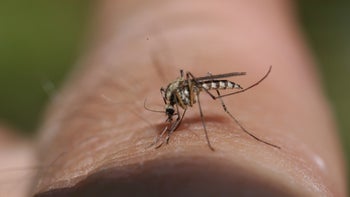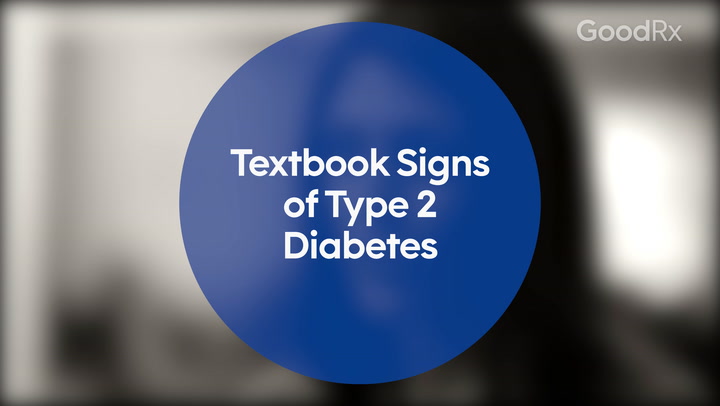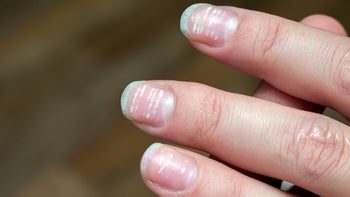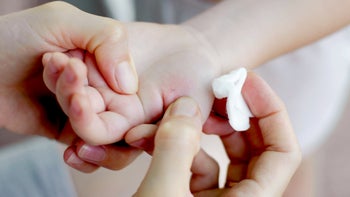
5 Signs of Vitamin Deficiencies That Can Show Up in Your Nails (With Pictures)
Key takeaways:
You can spot early signs of vitamin deficiencies in your fingernails and toenails.
Signs of vitamin deficiencies in nails include brittleness, white lines, and spoon-shaped nails.
Your healthcare team can make sure nail changes aren’t from a vitamin deficiency. Vitamin supplements can help correct deficiencies and help nails grow back healthy.
Table of contents

They say that “eyes are the windows to the soul.” But your nails can be windows to your health. Changes in your fingernails and toenails can sometimes be early signs of medical conditions, infections, and even vitamin deficiencies. Here are five nail changes that can be a sign of a vitamin deficiency.
What kind of nail changes can be a sign of a vitamin deficiency?
There are several types of nail changes that can be caused by vitamin deficiencies. But it’s important to keep in mind that other things can cause these changes, too. So it’s a good idea to get care if you’ve noticed nail changes on several, or most, of your nails. Your healthcare team can help you pinpoint the right reason for your nail changes. Here are some of the more common ways vitamin deficiencies can affect your nails.
1. Nail color changes
Healthy nails have a range of colors, depending on a person’s skin tone and the number of pigment-producing cells (melanocytes) under the nail bed. Blood vessels underneath the nail bed also lend a range of pinkish to reddish undertones. But certain vitamin deficiencies can affect your nail color.
Search and compare options
Iron deficiency can lead to anemia, which can make your nails look more pale than their usual hue. Meanwhile, a vitamin B12 deficiency can make your nails look darker than usual.
2. Horizontal grooves
Horizontal grooves or depressions that run all the way across your nails can be a sign of vitamin deficiency. This is especially true if you have lines across several fingernails. These depressions are called Beau’s lines. They can be a sign of severe zinc deficiency.
Beau’s lines can be caused by medical conditions and some medications, too. But, if you have a Beau’s line on only one nail, it was likely caused by an injury, not a medical condition or vitamin deficiency.

3. White horizontal lines
Most white spots on nails aren’t a cause for concern. But white lines that run all the way across your nails can be a sign of a vitamin deficiency, especially if you have multiple lines on several nails. Low calcium and zinc levels can both cause white horizontal lines to form on your nails. These lines are called transverse leukonychia.

4. Brittle, cracked nails
Brittle nails that break or crack easily can be a sign of a vitamin deficiency. Low iron, biotin, and calcium levels can weaken nails and make them softer. Soft, weak nails can crack and break more easily. They’re also drier and may peel or split at the edges.
5. Spoon-shaped nails
Nails that are flatter than usual can have a spoon-shaped appearance. This is called koilonychia and it’s a sign of a vitamin deficiency. Low iron and vitamin C levels can cause nails to develop a spoon-shaped appearance.
How long does it take for a vitamin deficiency to affect your nails?
It takes time for a vitamin deficiency to affect your nails’ appearance. Your fingernails grow about 3 mm per month while your toenails grow only about 1 mm per month.
That means if you develop a severe vitamin deficiency today, it may be a month or two before your fingernails have grown enough for you to notice the difference. It may take even longer for you to see a difference in your toenails.
Beyond vitamin deficiencies: Here’s what else your nails can tell you about your health.
Struggling with splitting nails? Our guide can help you fix split nails for good.
Do your nails seem weaker than usual? Here are common causes of brittle nails.
How can you tell if your nail changes are from a vitamin deficiency or something else?
Nail changes can be caused by many things like:
Vitamin and other nutrition deficiencies
Medical conditions
Medications
Injuries
Infections
It may be difficult to tell if your nail changes are from a vitamin deficiency or another cause. That’s why it’s important to get care if you notice nail changes on most of your nails.
You’re more likely to have a medical condition or vitamin deficiency if you see changes on both your fingernails and your toenails and not just one or the other. Also, medical conditions and vitamin deficiencies will change most of your nails at the same time. If you see changes only in one or two nails (fingers or toes), something like an infection or injury is more likely to be causing the changes.
Your healthcare team can examine your nails and order any necessary tests to figure out what’s causing your nail problems.
How long does it take for nail changes to go away once you treat a vitamin deficiency?
Vitamin supplements can correct vitamin deficiencies and help you recover. But vitamin supplements won’t make your nail changes go away. Instead, they make your nails grow back healthy, strong, and with their usual appearance. Your nails won’t recover their normal appearance until they fully grow back. Your nails only grow 3 mm a month on average. So it will take several months for your nails to look like they used to. It will take your toenails longer to grow out to their usual appearance.
The bottom line
Vitamin deficiencies can affect your health and your nail appearance. Some common signs of vitamin deficiencies in nails include horizontal white lines, horizontal grooves, and spoon-shaped nails.
Get medical care if you have nail changes affecting most of your finger and toenails. Your team can check whether a vitamin deficiency is causing your nail changes. Vitamin supplements can correct vitamin deficiencies and help your nails grow back strong and healthy.
Why trust our experts?


Images used with permission from VisualDx (www.visualdx.com).
References
Dawman, L., et al. (2018). Blue nails: Window to micronutrient deficiency. BMJ Case Reports.
De Berker, D. A. R., et al. (2007). Nail biology and nail science. International Journal of Cosmetic Science.
MedlinePlus. (2023). Nail abnormalities.
Rathod, D. G., et al. (2023). Spoon nails. StatPearls.
Seshadri, D., et al. (2012). Nails in nutritional deficiencies. Indian Journal of Dermatology, Venereology, and Leprology.

























